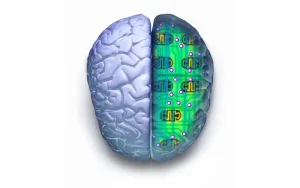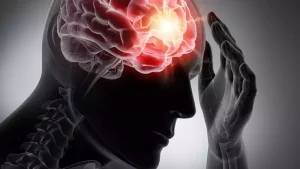Scientists are investigating a sleep disorder called REM sleep behavior disorder (RBD), where individuals physically act out their dreams. This condition goes beyond nighttime disturbances: studies suggest a significant connection between RBD and diseases like Parkinson’s.
A collaborative study known as the NAPS Consortium is gathering comprehensive data on RBD, setting the stage for future trials of treatments to protect the nervous system. While there’s no current way to change the course, researchers aim to create advanced electronic tools for early detection and treatment.”
Key points:
Scientists at Mayo Clinic discovered that 50% to 80% of individuals with RBD later develop neurodegenerative conditions, particularly synucleinopathies such as Parkinson’s disease.
A group from Mayo Clinic is spearheading the NAPS Consortium, which is working to gather thorough information about RBD from nine locations across North America.
They are investigating bioelectronic devices and methods like transcranial magnetic stimulation as possible future treatments for synucleinopathies.
One morning, while Dr. Erik St. Louis was checking on a sleeping patient at the Center for Sleep Medicine, he observed something unusual.
The patient, a woman in her early 60s, began running under her bedcovers. Her eyelids flickered, and her legs started moving, starting off slowly but then quickly gaining momentum, as if she were racing along an unseen path. After about 30 seconds, she suddenly halted and opened her eyes.
This behavior wasn’t what Dr. St. Louis would have anticipated from someone with sleep apnea. In their later meeting, she recounted the incident. “Well, I have these wild dreams sometimes,” she explained.
“I dreamt there were two men chasing me. I spotted a getaway car that would help me escape—I could see its taillights slowly fading, so I sprinted faster and faster to catch up. Just as I was about to leap into the car, I woke up.”
Dr. St. Louis, a neurologist and sleep specialist at Mayo Clinic, had heard similar tales many times. Acting out dreams during sleep is the primary sign of REM (rapid eye movement) sleep behavior disorder, or RBD—a sleep disorder he and his colleagues at Mayo Clinic have been addressing for years.
They’ve discovered that aside from the potential for harm to patients and their sleep partners, RBD could serve as an early indicator of neurodegenerative conditions like Parkinson’s disease.
While it’s estimated to affect only about 1% of the general population, RBD is prevalent enough that Dr. St. Louis occasionally identifies it when evaluating a patient for another, more common sleep condition. “It can be completely unexpected and a revelation to both the patient and me,” he says.
A team of Mayo Clinic sleep researchers are helping to lead an ambitious effort to gather as much data about RBD as possible.
“The end game is to understand the natural history of the disorder well enough that we can do a neuroprotective treatment trial of a medication or intervention that can prevent Parkinson’s disease or dementia from developing in the future,” says Dr. St. Louis.
In REM sleep behavior disorder, the brain cycles through REM sleep multiple times during the night. Each cycle gets longer, comprising about a quarter of the night’s sleep by morning. During REM sleep, your eyes move rapidly, dreams become more vivid, and most muscles are temporarily paralyzed.
This paralysis is an evolutionary safeguard. Without it, we might physically react to our dreams, which wouldn’t be healthy, explains Dr. Michael Silber, a Mayo neurologist and sleep medicine physician.
However, individuals with REM sleep behavior disorder don’t experience this paralysis, leading them to act out their dreams. This can result in activities like singing, shouting, punching, and more, potentially causing harm to themselves and others.
While these episodes were only recognized as a medical disorder in 1986, studies led by Dr. Silber and his team at Mayo Clinic have demonstrated that RBD can be more than a nighttime disturbance. They found that 50% to 80% of people with RBD may later develop neurodegenerative disorders, specifically those involving abnormal deposits of the protein alpha-synuclein in the brain. These disorders include Parkinson’s disease, dementia with Lewy bodies, and multiple system atrophy.
Toxic clumps of alpha-synuclein seem to harm parts of the brainstem responsible for immobilizing our muscles during sleep, before affecting areas that regulate activities during wakefulness.
Their research indicates that RBD can develop many years before the onset of parkinsonism or cognitive decline. This presents an opportunity for early detection of synucleinopathies and the development of therapies targeting the proteins responsible for neurodegeneration.
Mayo Clinic researchers are at the forefront of the NAPS Consortium, a study paving the way for future clinical trials of protective treatments. This study involves enrolling RBD patients at nine sites across North America and subjecting them to a battery of tests, including brain imaging, blood tests, genetic screens, and polysomnography.
The team intends to track over 300 patients over time, observing various aspects of their condition, particularly those who go on to develop a more evident neurodegenerative illness. This data will aid in identifying patients at imminent risk and evaluating the impact of treatments in development.
Additionally, they have acquired new biomarkers, allowing for closer monitoring. These biomarkers can detect and measure alpha-synuclein in cerebrospinal fluid and small nerve fibers from a skin biopsy. They’ve also secured a grant to develop a blood-based biomarker for the same purpose.
Dr. Boeve likens this to managing high cholesterol, aiming to reduce risks in individuals with RBD and potentially delay or prevent the onset of future illnesses.
Regrettably, researchers have not yet uncovered an intervention capable of completely altering the course for patients who are destined to develop Parkinson’s or a related neurodegenerative condition. This situation raises an ethical dilemma, as Dr. Silber explains, regarding whether to inform patients about potential future risks that can’t be prevented.
The Mayo Clinic research team conducted a survey of 113 RBD patients to gauge their opinions. Over 90% expressed a desire to be informed of their risk. They believed that such prognostic information was vital for discussions with family and friends and could help them plan for the future. However, when asked about their emotional response to this knowledge, a significant percentage of patients reported experiencing distress and anxiety.
Dr. Silber emphasizes the importance of addressing this anxiety and advises patients not to allow it to dominate their lives. It could be many years or even decades before a neurodegenerative disease manifests, and not all RBD patients will develop one during their lifetime. Knowing their risk also allows them to participate in clinical research, which might not have been an option if they remained unaware.
Mayo researchers are actively exploring options to offer patients in the future to halt the progression of neurodegeneration. One avenue of investigation involves bioelectronic devices, which use electronic signals for disease diagnosis and treatment. Transcranial magnetic stimulation (TMS), a non-invasive brain stimulation therapy used for depression treatment, is under evaluation by Mayo Clinic psychiatrist Maria Lapid, M.D., for its potential to alleviate mild cognitive impairment. Dr. Boeve envisions similar approaches for synucleinopathies.
Additionally, Dr. Boeve hopes for bioelectronic devices capable of monitoring and diagnosing RBD as patients act out their dreams in the comfort of their homes. Diagnosing RBD can be challenging for clinicians unfamiliar with the disorder, and this technology could aid in early identification.









